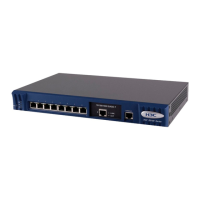Operation Manual – NTP
H3C S3100 Series Ethernet Switches Chapter 1 NTP Configuration
1-13
authentication. This improves network security. Table 1-10 shows the roles of devices
in the NTP authentication function.
Table 1-10 Description on the roles of devices in NTP authentication function
Role of device Working mode
Client in the server/client mode
Client in the broadcast mode
Client in the multicast mode
Client
Symmetric-active peer in the symmetric peer mode
Server in the server/client mode
Server in the broadcast mode
Server in the multicast mode
Server
Symmetric-passive peer in the symmetric peer mode
1.5.1 Configuration Prerequisites
NTP authentication configuration involves:
z Configuring NTP authentication on the client
z Configuring NTP authentication on the server
Observe the following principles when configuring NTP authentication:
z If the NTP authentication function is not enabled on the client, the clock of the
client can be synchronized to a server no matter whether the NTP authentication
function is enabled on the server (assuming that other related configurations are
properly performed).
z For the NTP authentication function to take effect, a trusted key needs to be
configured on both the client and server after the NTP authentication is enabled on
them.
z The local clock of the client is only synchronized to the server that provides a
trusted key.
z In addition, for the server/client mode and the symmetric peer mode, you need to
associate a specific key on the client (the symmetric-active peer in the symmetric
peer mode) with the corresponding NTP server (the symmetric-passive peer in the
symmetric peer mode); for the NTP broadcast/multicast mode, you need to
associate a specific key on the broadcast/multicast server with the corresponding
NTP broadcast/multicast client. Otherwise, NTP authentication cannot be enabled
normally.
z Configurations on the server and the client must be consistent.

